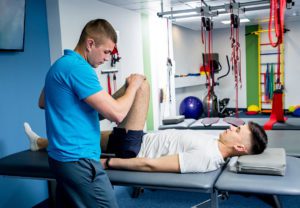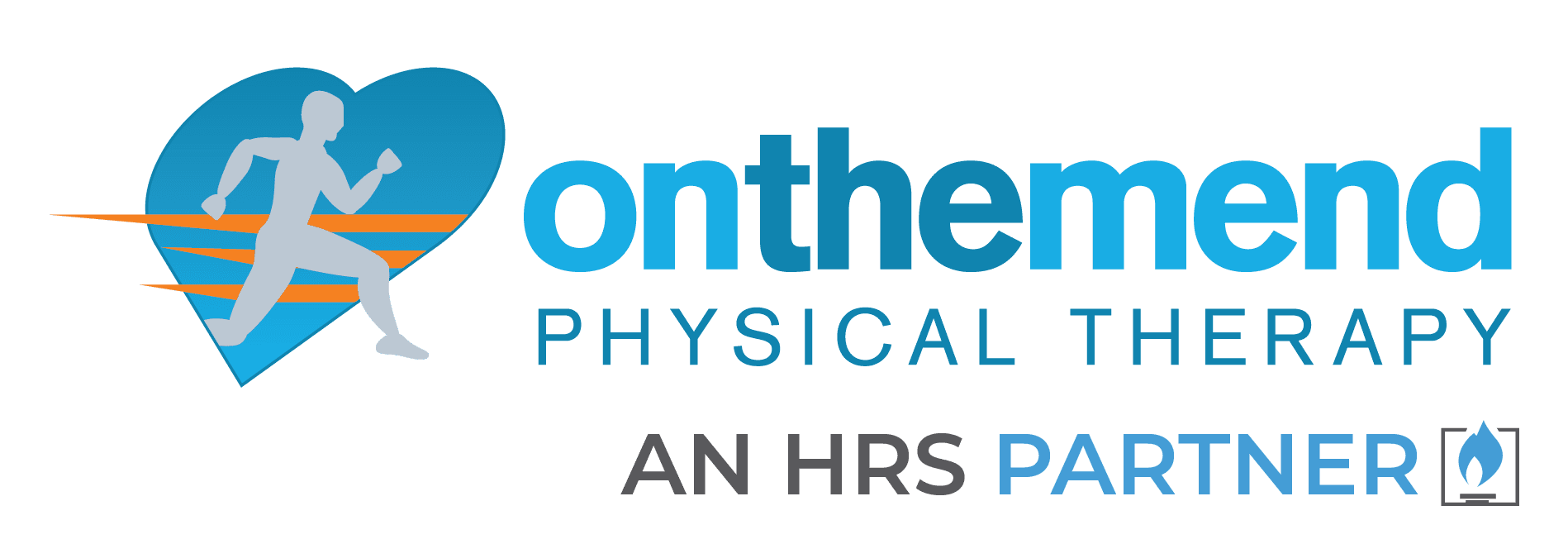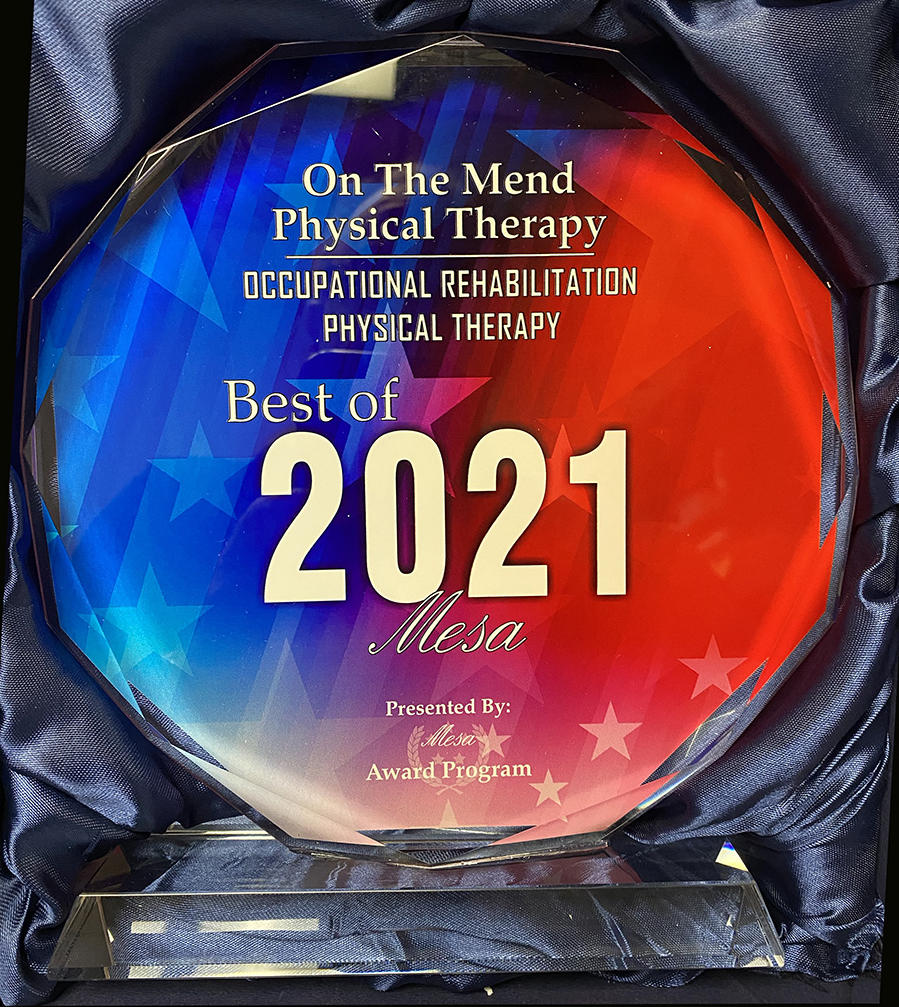Physical therapy will help you manage your pain, prepare you for the best course of treatment, and
GET YOU BACK IN THE GAME!!
Game on! We hope you successfully compete without injury – but if it happens, we want to help you get back in the game quickly. Here are a few common athletic injuries physical therapy can help speed recovery with:
Ankle Sprain
Ankle sprains are common injuries that occur when the foot twists or turns beyond its normal range of movement, causing the ligaments of the ankle to overstretch or tear. Of all sports injuries in the United States, 45% are ankle sprains and basketball players are the athletes most often affected. People who have an increased risk of spraining an ankle include younger athletes, members of the military, and anyone who frequently runs, jumps, and changes direction quickly, while performing an athletic activity (“cutting motion”). Physical therapists help people who have experienced ankle sprains reduce their pain; regain their strength, motion, and balance; return to normal activity levels; and avoid reinjury.
How Can Physical Therapy Help?
We help people with ankle sprains recover more quickly than they would without treatment. The time it takes to heal an ankle sprain varies, but results can often be achieved in 2 to 8 weeks. Your physical therapist will work with you to design a specific treatment program that meets your needs and goals. We can advise self-treatments to allow you to be as active as possible with the least amount of pain, and help speed healing. We will also work with you to:
- Reduce Pain and Swelling.
- Improve Flexibility.
- Improve Endurance.
- Improve Balance.
- Restore Agility.
- Return to Activities.
Your physical therapist will discuss activity goals with you and use them to set your work, sport, and home-life recovery goals. Your treatment program will help you reach your goals in the safest, fastest, and most effective way possible. Your physical therapist will teach you exercises, work retraining activities, and sport-specific techniques and drills to help you achieve your goals.
Speed Recovery Time. Your physical therapist is trained and experienced in choosing the best treatments and exercises to help you safely heal, return to your normal lifestyle, and reach your goals faster than you are likely to do on your own.
Rotator Cuff Tear
Regardless of which treatment you have—physical therapy only, or surgery and physical therapy—early treatment can help speed up healing and avoid permanent damage.
How Can Physical Therapy Help?
Your physical therapist will work with you to restore your range of motion, muscle strength, and coordination, so that you can return to your regular activities. In some cases, your therapist may help you learn to modify your physical activity so that you put less stress on your shoulder. If you decide to have surgery, your therapist can help you both before and after the procedure.

physical therapy for knee injury
Anterior Cruciate Ligament (ACL) Tear
The ACL is one of the major ligaments (bands of tissue) connecting the thigh bone to the shin bone and is an injury to the knee commonly affecting soccer players, basketball players, skiers, gymnasts, and other athletes. Most people who sustain an ACL tear will undergo surgery to repair the tear; however, some people may avoid surgery by modifying their physical activity so that they don’t put a lot of stress on the knee. Physical therapy will help you both prepare for surgery and recover your strength and movement following surgery.
How Can Physical Therapy Help?
Treatment Before Surgery – You may want a short course of rehabilitation before surgery to help decrease swelling, increase the range of movement of your knee, and strengthen your thigh muscles (quadriceps).
Treatment After Surgery – Physical therapists have developed and published guidelines on knee stability and movement problems, which recommend actions such as Bearing weight exercises,
Exercises to increase your ability to move, Exercises to increase your strength, and other exercises specific to your sport so you can return to your sport and physical activity.
HEAD INJUR OR CONCUSSION
Every concussion is considered a serious injury by health care providers. A physical therapist can assess symptoms to determine if a concussion is present, and treat the injury by guiding the patient through a safe and individualized recovery program.
We will ask a patient several questions to understand all of the symptoms they are experiencing and perform numerous tests to identify problems caused by a concussion, including strength, coordination, balance, sight, smell, hearing, and memory tests. Seek medical help immediately following any head injury.
How Can Physical Therapy Help?
Because no two concussions are the same, your examination will assess individual symptoms and problems so that we can design a safe and individualized treatment program to include:
- Rest and Recovery.
- Stopping Dizziness and Improving Balance.
- Reducing Headaches.
- Restoring Strength and Endurance.
- Returning to Normal Activity or Sport.
As symptoms ease and you are able to regain your normal strength and endurance, we’ll help you gradually add normal activities back into your daily routine avoiding overloading the brain and nervous system. Overloading the brain during activity after a concussion interferes with the healing of the brain tissue and can make your symptoms return. We will help you return to your normal life and sport activities in the quickest and safest way possible, while allowing your brain to properly heal. a
For more information on a specific athletic injury and how physical therapy can help, call ON THE MEND PHYSICAL THERAPY for a free consultation appointment.



